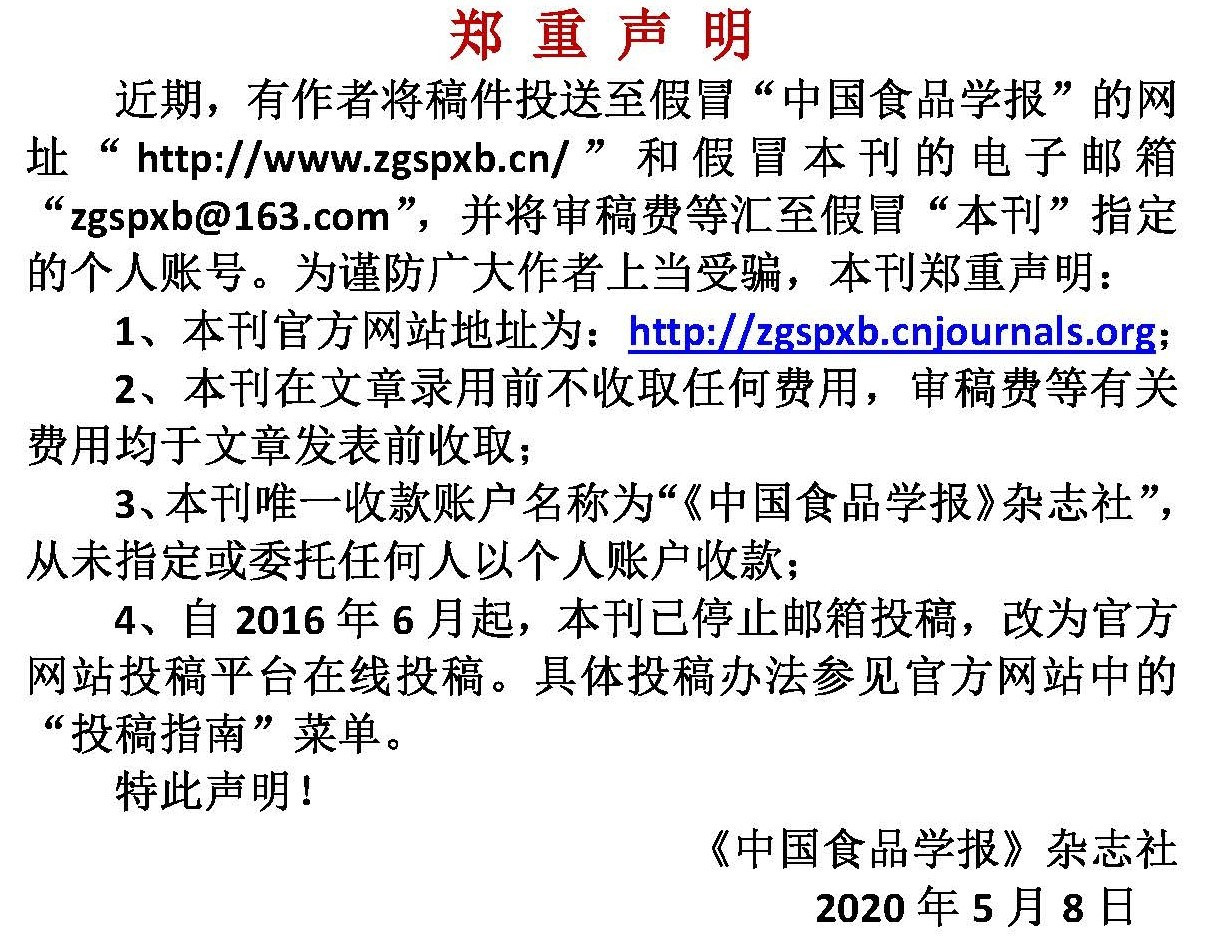基于体外全仿生消化模型分析海带和紫菜中微量元素的生物可给性
作者:
作者单位:
作者简介:
通讯作者:
中图分类号:
基金项目:
国家现代农业产业技术体系建设专项资金项目(CARS-50);中国水产科学研究院基本科研业务费资助项目(2020TD71)
Bioaccessibility of Trace Metals in Laminaria japonica and Porphyra yezoensis Using in Vitro Digestion Model
Author:
Affiliation:
Fund Project:
引用本文
赵艳芳;尚德荣;康绪明;翟毓秀;王联珠;盛晓风;丁海燕.基于体外全仿生消化模型分析海带和紫菜中微量元素的生物可给性[J].中国食品学报,2021,21(2):289-298
复制分享
文章指标
- 点击次数:
- 下载次数:
- HTML阅读次数:
历史
- 收稿日期:
- 最后修改日期:
- 录用日期:
- 在线发布日期: 2021-03-02
- 出版日期:
版权所有 :《中国食品学报》杂志社 京ICP备09084417号-4
地址 :北京市海淀区阜成路北三街8号9层 邮政编码 :100048
电话 :010-65223596 65265375 电子邮箱 :chinaspxb@vip.163.com
技术支持:北京勤云科技发展有限公司
地址 :北京市海淀区阜成路北三街8号9层 邮政编码 :100048
电话 :010-65223596 65265375 电子邮箱 :chinaspxb@vip.163.com
技术支持:北京勤云科技发展有限公司
